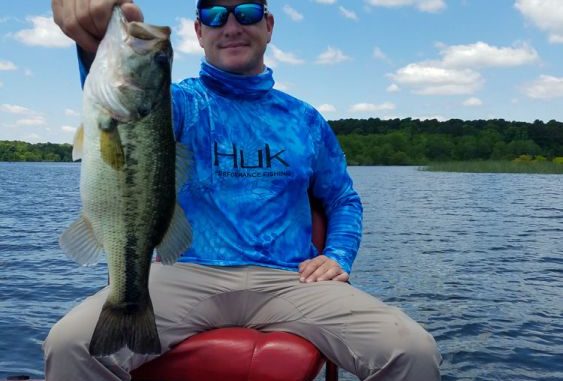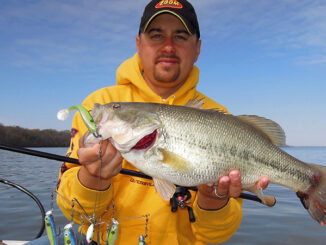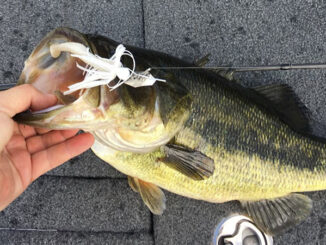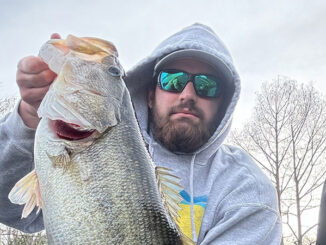
After a prolonged cool and wet spring, I’m ready for the next season on Toledo Bend.
And I’m sure there are many other bass anglers chomping at the bit to see what a lower pool level and warmer water temperatures bring to fishing success on this great lake. Everyone considers June to be summertime, a time to work the peppergrass and other vegetation, as well as the beginning of the traditional deepwater patterns.
Toledo Bend was at and even above full pool at times through March and late April, when the level was 171.19. I assume the SRA will continue to draw down the lake and, if that’s the case, I wouldn’t be surprised if was in the 168s or 169s by June.
Bassin’ success ought to get better and better as the water warms. That means the topwater bite (for me the plastic frog and walk-the-dog style artificial lures, like the Zara Spook) will come into play in and around the vegetation that’s showing more and more with each drop. As the water goes out, more and more vegetation will be exposed north to south.
While the area around the dam is always the last of the places to fire for spawning bass (the fish are doing their thing in the shallows behind the haygrass), we’re in or entering a postspawn period now for bass across much of the lake. The way it’s looking, the spawn should be over, period, before the second or third week of May.
There are still some good-sized bass being caught now. It took five bass weighing 33.1 pounds to win a recent Keith’s Toledo Bend Tackle tournament on the Texas side, with most of the bass reportedly being caught in 20- to 22-foot depths on football jigs and V&M soft plastics. That pattern, which is so effective with the use of marine electronics, should come into play more and more.
I’d target ridges, drains and flats, looking for break lines where many bass move to look for food.
I’ve been tapping the bass on a ½-ounce Stanley Swim Max Jig, black/blue with some pearl strands, in 5- to 8-foot depths. Most of the time the bass hit it on the first drop. If not, then after two rod snaps. That jig should continue to be effective, as will a Carolina-rigged soft plastic, which is producing for me still, and a ChatterBait-style artificial lure.
Soft plastics such as trick worms, wacky worms and Senkos are triggering many, many bites, too, and I don’t see that changing through May and June. Well, the preferred color scheme probably will change from watermelon/red to more plum apple, red bug and June bug colors.
As of this writing, bream still haven’t made a major move to the shallows to spawn because of the unseasonably cool water temperatures. When they do, bass will be right there with them. That’s when your favorite plastic frog or other topwater lure becomes really dominant around vegetation, particularly the peppergrass.
Vegetation, by the way, is showing itself in many areas of the lake where it had inexplicably disappeared for a long while. That’s a good sign going into the rest of 2018.
Crappie fishing should be good and getting better as the panfish move to 22- to 25-foot depths, where they hang around sunken brush piles and always seem hungry for minnows. They’re already starting to migrate to their summer holes, and the crappie fishing should be excellent into August.
If you want to catch bass in June, I’ve been guiding on this lake most of my life and you’re more than welcome in my boat.
Give me a call at (936) 404-2688.


